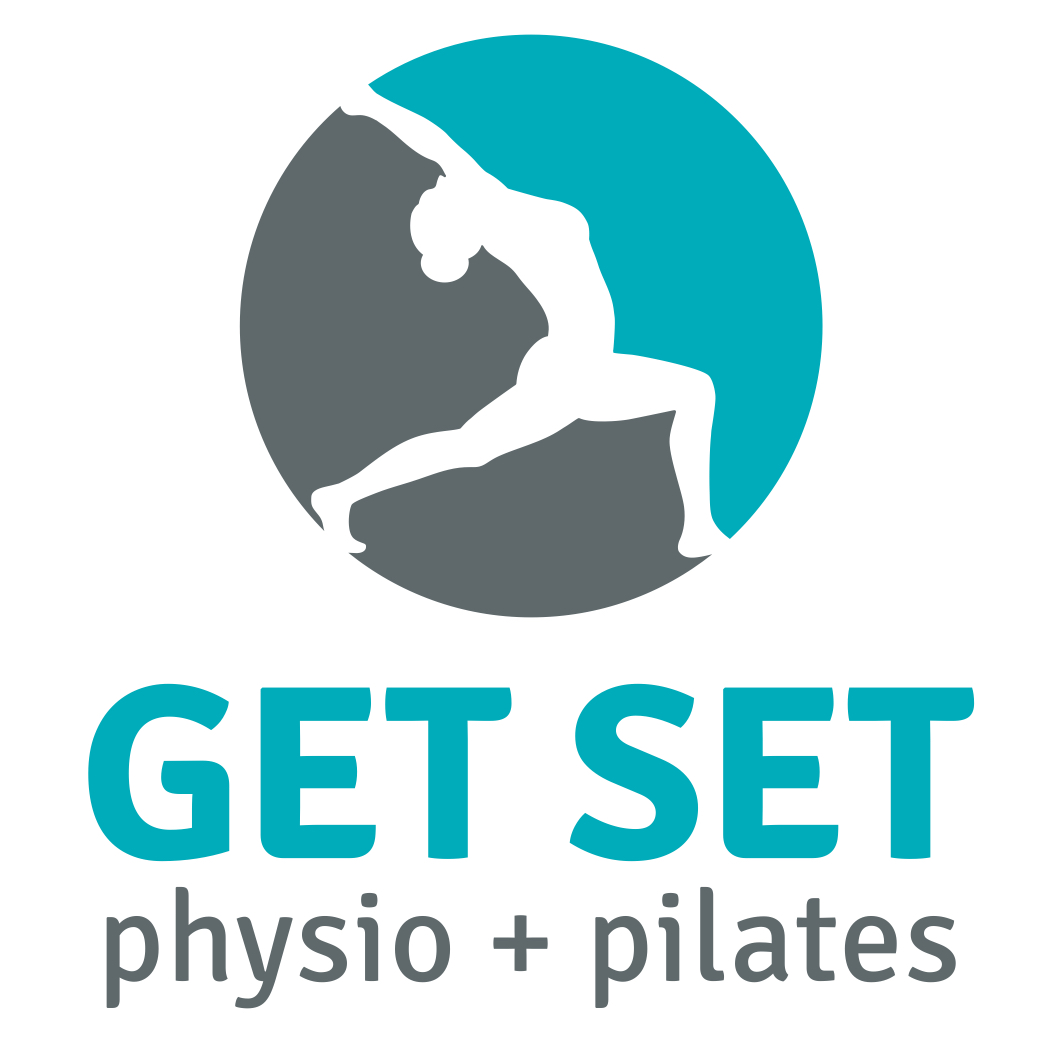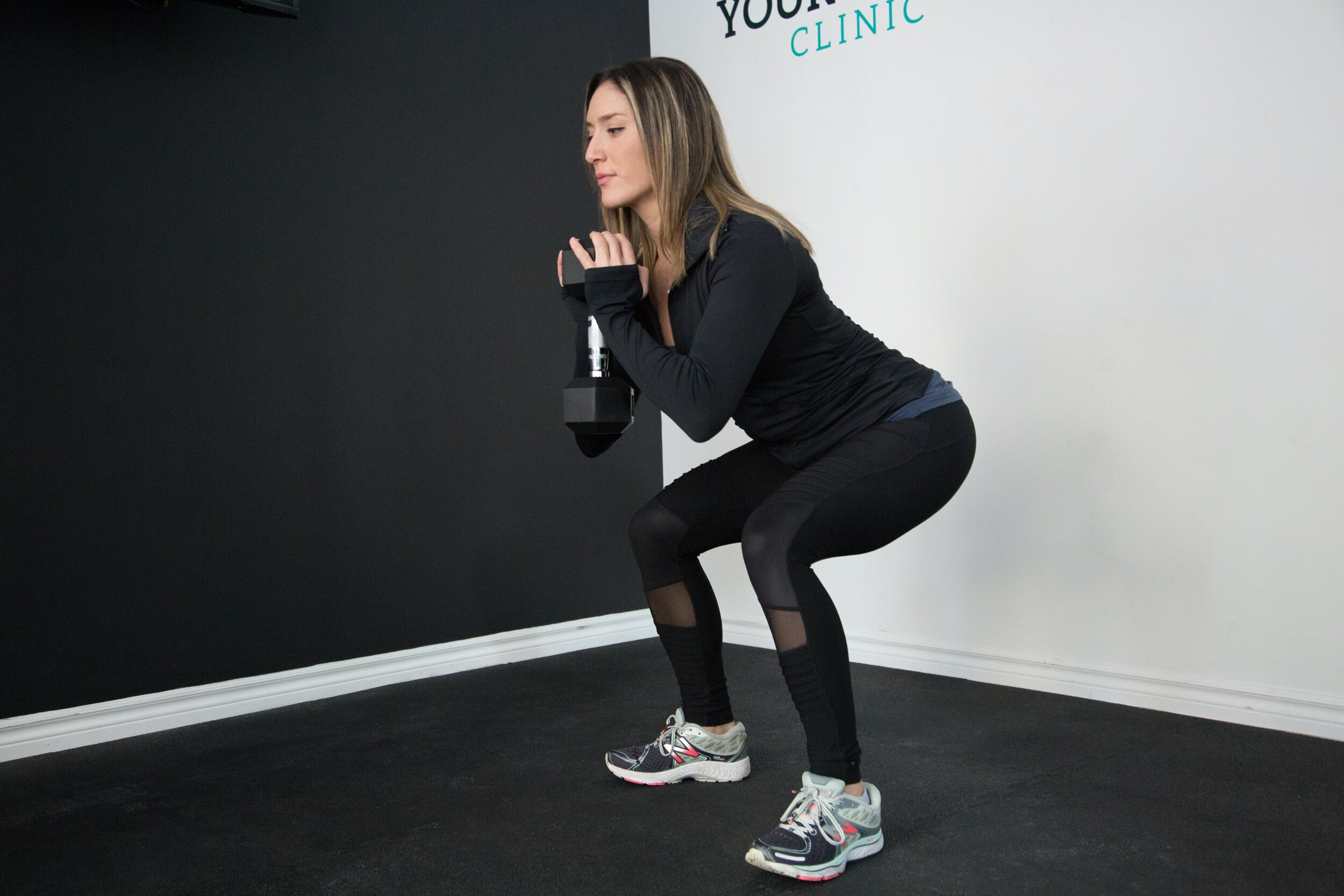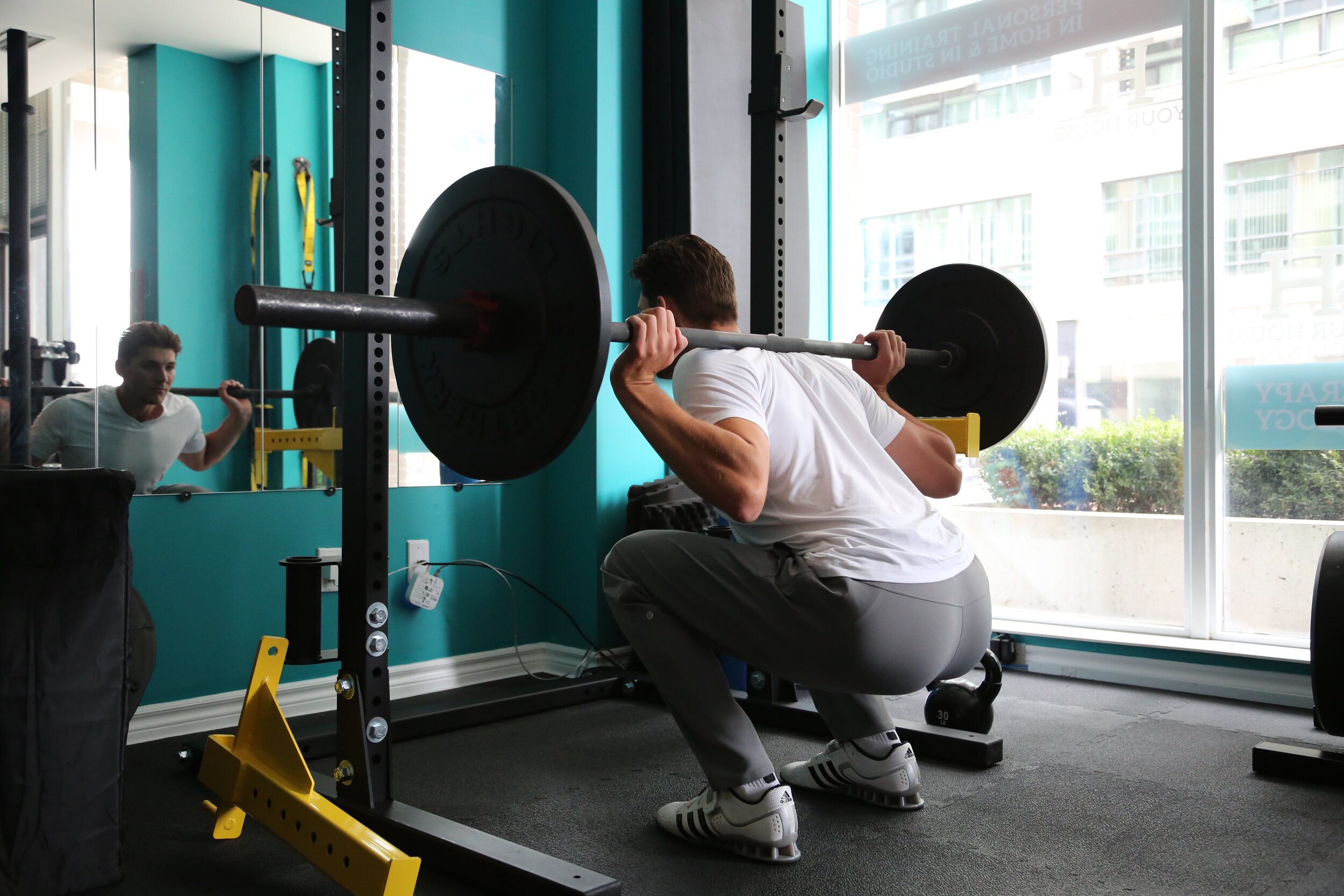There are 28 squat types… yes you read that right -28!
In a nutshell a squat is the movement whereby we move our body down towards the floor from a standing position by bending the hips back while allowing knees to bend forward, keeping our back straight and knees pointed in the same direction as feet. Descend until thighs are just past parallel to floor or as low as you can go whilst maintain a straight back. From this bottom position – reverse the movement and stand back up.
There are lots of variations of this movement in different planes, and with different equipment.
Read below for some of the squats we may prescribe in your rehab at Get Set Physio and how to do them;
1. Bodyweight squats – This is a “normal” squat without any weight or equipped being used during the movement.
2. Single leg/pistol squats - Squat down as far as possible whilst keeping one leg elevated off of floor. Keep back as straight as possible and supporting knee pointed same direction as foot supporting. Raise body back up to original position until knee and hip of supporting leg is straight. Repeat and continue with opposite leg.
3. Split squats - Position feet far apart; one foot forward and other foot behind. Squat down by flexing knee and hip of front leg. Allow heel of rear foot to rise up while the knee of rear leg bends slightly until it almost makes contact with floor. Then stand back up by extending hip and knee of forward leg.
4. Cossak squat – Like a lateral lunge, Lower your body toward side of angled foot by bending knee and hip of lead leg while keeping opposite leg only slightly bent.
5. Box squat – Squats to a box! That’s it..sort of. Once your buttock makes contact with bench or box, raise body back up to original position until knee and hip of supporting leg is straight. We aren’t sitting for a rest on this box. It help’s us to go heavier with our weight with a bit of assistance, or if we have restricted movement making sure we don’t squat too low.
6. Front squat - Position a barbell bar in front of the shoulders either by Crossing your arms and placing hands on top of barbell with upper arms parallel to floor., or bend the arms and wrist backwards so the elbows are pointing directly forward.
7. Barbell squat- Position a barbell bar on the back of shoulders and grasp barbell to sides.
8. Safety squat – Using a safety bar Position your head in yoke with padded bar around shoulders. Hands can be placed on ends of yoke or on safety bar out to sides.
9. Hack squat – There are two types one is using a barbell - you Position the barbell just behind legs. With feet flat on floor, squat down and grasp barbell from behind with overhand grip.
10. Hack squat on lever machine - Position shoulders under shoulder pad and back on back pad. Place feet slightly high on platform. Extend hips and knees and release dock lever if available.
11. Trap bar squat – Using a trap bar stand in the centre. Hold the bar to the sides .
12. Zercher squat – Using a barbell hold it between the crease of your forearms and upper arms. Elbows should be facing down and shoulder width apart. Cross wrists over each other and pull bar in, close against body.
13. Goblet squat – Using a kettlebell hold kettlebell typically by the bell upside down. Can also hold it by the horns right side up against the front of your body.
14. Overhead squat – An Olympic lifting movement/skill. Using a Snatch or Hang Snatch position with a barbell over head, arms are fully extended with very wide overhand grip above your head. Position toes outward with wide stance. Maintain bar slightly behind head whilst squatting.
15. Belt squats - Place weight on dip belt around waist. Step up onto boxes or benches spaced apart; foot on each one.
16. Sumo squats – Standing with feet more than shoulder width apart and toes facing outwards.
17. Narrow squats – Feet standing closer than shoulder width apart sometimes even touching.
18. Wall squats – Stand with your back up against the wall. Take 1-2 steps forward with both feet. Slide down the wall until your thighs are parallel. Make sure your knees aren’t .
19. Spanish squats– This involves a non-elastic strap behind the knees and tied onto a heavy pole e.g. squat rack. The person leans back against the straps to squat down until thighs are parallel to the floor.
20. Smith squats – These are squats using a smith machine. The barbell is fixed within a safety rail system. The barbell helps to control the bar for you and provides a near vertical movement with minimal compensations. You squat with this barbell the same as a barbell front or back squats and it helps to “spot” you if you are lifting heavier and prevent you from slightly moving the bar forward or backwards as your are bending or standing back up.
21. Lever squats– This is another machine that helps you to squat with heavy weights if you have shoulder mobility issues or stiff ankles. This places the weights over your shoulders without having to hold onto a bar and the foot plate is often angled allowing you to squat deeper without ankle mobility restrictions
22. Sissy machine squats– This machine locks your feet into place and allows you to put more body weight through your quadriceps and core. Leaning right back places the tension on the thighs without risk of falling
23. Sissy squats- With hips and waist straight, bend knees to allow body to fall backwards as knees come forward. Allow heels to raise from floor. Lower body until knees are almost fully flexed or near floor. Return to original position by extending knees as heels return to floor.
24. Ball squats– leaning up against a yoga ball on the wall, whilst bending at your knees to squat down simultaneously lean back into the ball. This helps to take some of the stressors of squatting away from your gluteals and lower back.
25. Frog squats- take a wider than shoulder stance and keep your feet angled out. Whilst bending at the hips Place your elbows on the inside of your knees and keep your hands together. Come down low until you feel a stretch on you adductors and quadriceps. Then drive your hips up and back. At the top position, your hips should be nearly in line with shoulder level. You should feel a nice stretch on your hamstrings and glutes, then return to standing.
26. Trx squats – Hold the handles of the TRX in front of you. Step back with both feet. Squat whilst holding onto the trx. This will help reduce some of the body weight on your joints and allow you to squat back and lower.
27. Roman chair squats – Placing a barbell in a squat rack at knee level. Stand in front of the bar. Sit back over the bar to put tension on your core, glutes, and quadriceps. Stand back up
28. Cable bar – Using a cable machine hold onto a straight bar with the tension coming from low on a machine. Arms should be fully extended, bend at the knees and squat down whilst holding onto the bar. Return to standing. This puts extra pressure on trying to cause a forward weight shift in the body as moving down. It also places extra stress on your core to keep your torso upright helping to strengthen your stability muscles.




